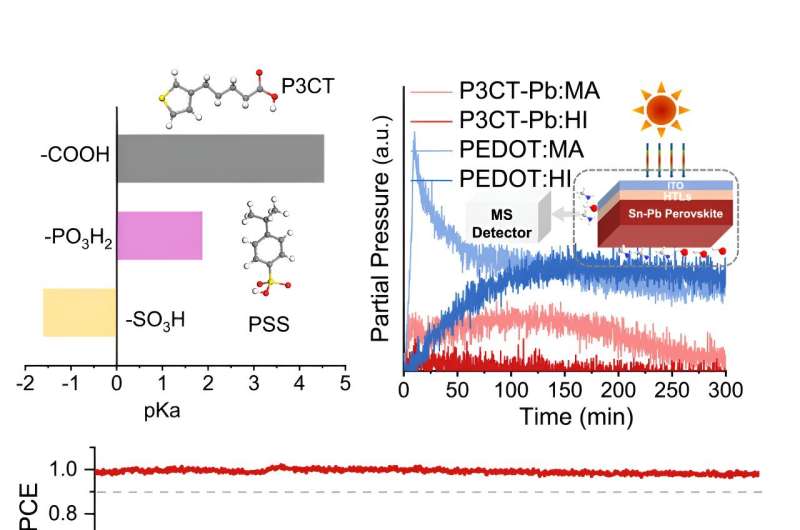
JULY 10, 2024 by Nicki Gorny, University of Toledo
Collected at: https://techxplore.com/news/2024-07-physicists-lifespan-perovskite-solar-cells.html
Silicon dominates the current commercial solar cell industry, offering an attractive combination of low cost, high efficiency and long lifespan.
But metal halide perovskites present a promising alternative, as researchers have repeatedly proven at The University of Toledo’s Wright Center for Photovoltaics Innovation and Commercialization.
Perovskites are lower cost. They’re higher efficiency, as Wright Center researchers and their collaborators documented using all-perovskite tandem solar cells in the journal Nature in 2022. And their potential lifespan is lengthening, thanks in part to an innovative method that Wright Center researchers developed to increase their durability and documented in 2023 in the journal Science.
Now Wright Center researchers are focusing on the stability of these cells, in a continued effort to extend their operational lifespan and chip away at this final obstacle to their commercialization.
In new research published in the journal Joule, they describe an adjustment to the chemical structure of a key component of a tandem cell that allows it to continuously generate electricity for more than 1,000 hours.
“State-of-the-art all-perovskite tandem cells with a conventional hole-transfer layer can only continuously operate for hundreds of hours,” said Dr. Zhaoning Song, a co-author and assistant professor in the Department of Physics and Astronomy at UToledo.
“Our innovation prolongs the stability of these devices, advancing all-perovskite tandem technology and bringing it closer to practical application.”
The hole-transfer layer is an important component of a solar cell, which in its simplest form consists of two stacked semiconductors that generate electricity through a complex shift of electrons. The hole-transfer layer, which collects positively charged particles called “holes,” is integral to the efficiency of this electron-shifting process.
But researchers have long noticed a complication related to the hole-transfer layers of low-band-gap tin-lead perovskites—namely, the conventional hole-transfer layer reacts chemically with the semiconductor in this case, corroding the panel and hindering its stability.
This is significant because low-band-gap tin-lead perovskites are an essential component of an all-perovskite tandem solar cell, the arrangement of two perovskite solar cells stacked atop each other that’s attractive to researchers because it increases the total electrical power generated by the unit. All-perovskite tandem solar cells incorporate a wide-band-gap top cell and low-band-gap bottom cell, drawing on a different part of the sun’s spectrum to generate electricity.
In the research published in Joule, researchers identify the source of the corrosion in the low-band-gap cells and introduce nonconventional hole-transfer layer with a caroboxyl group with a higher acid disassociation constant. This new hole-transfer layer suppresses the deprotonation process that causes the corrosion and ultimately extends the lifespan of the tandem unit to more than 1,000 hours with an efficiency loss of less than 3%.
“UToledo physicists are committed to advancing perovskite solar cell technology, which we believe promises to be a lower-cost, higher-efficiency alternative to silicon as we look toward a decarbonized future,” said Dr. Yanfa Yan, senior author and a Distinguished University Professor in the Department of Physics and Astronomy.
“This is an exciting development, but there are still obstacles to overcome before all-perovskite tandem solar cells make it to the commercial market.”
More information: Sheng Fu et al, Suppressed deprotonation enables a durable buried interface in tin-lead perovskite for all-perovskite tandem solar cells, Joule (2024). DOI: 10.1016/j.joule.2024.05.007

Leave a Reply